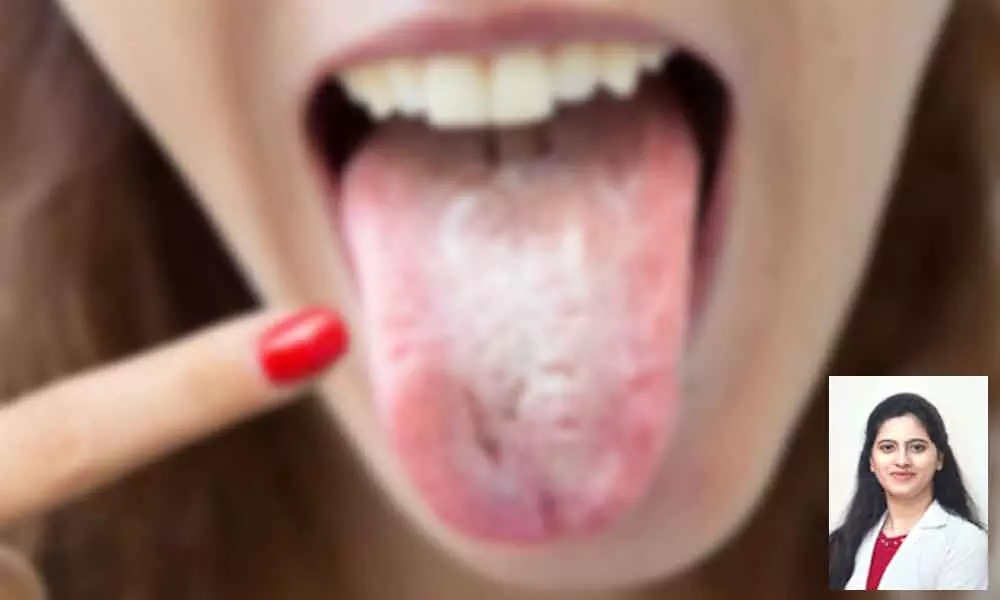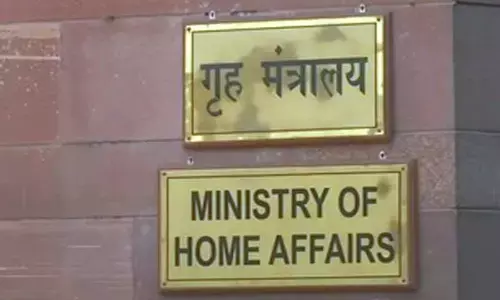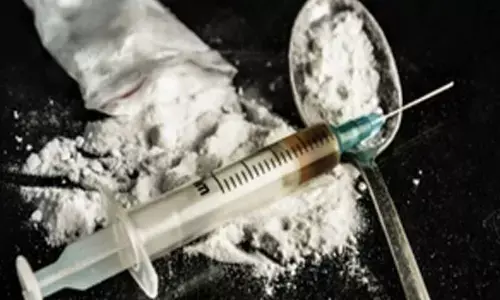Oral manifestations associated with Covid-19

Dr. Ramyasree Chindam, Practicing Dentist at Dr Katanguri Surendar Reddy Multi Specialty Dental Clinic, Hanamkonda, Warangal
Most of dental clinics were closed except for emergencies. Dentists were considered at high risk due to two factors
As we all know, one of the most emerging public health events, corona virus disease 2019 (COVID-19) has attracted worldwide attention. The corona virus disease 2019 (COVID-19) is not only fast but also lethal, and has become a global pandemic, killing hundreds of thousands of people and posed a challenge for health authorities worldwide.
Virus entry is generally through nose and mouth so in every possibility there is risk, more chances of entry. The way of contagion through direct contact and through saliva in the form of small drops and the production of aerosols has facilitated the rapid spread worldwide. It is our responsibility to keep our oral health hygiene to prevent virus entering from mouth.
During this period, despite the implications of saliva for virus transmission and the possibility of salivary glands as a reservoir, few oral manifestations have been reported like, Loss of sense of smell (anosmia), Loss of sense of taste, Dry mouth (xerostomia), Mouth ulcers in addition to the most prominent clinical symptoms include fever, fatigue and dry cough.
Severe cases were complicated with acute respiratory distress syndrome. But there are numerous others that could also be a sign of the disease. Generally, COVID-19 is an acutely resolving but potentially fatal disease.
As we settle down in the new normal post covid-19, we should still keep our awareness up to date regarding the newborn illness. As the covid-19 pandemic continues to cause unprecedented damage to lives across the world. Of late, there been cases where patients have experienced newer symptoms after being infected with the corona virus.
Now, a new rare and strange symptom has emerged, a significant number of COVID-19 patients are experiencing bumps on their tongue, along with inflammation and swelling which is referred to as Covid tongue.
COVID TONGUE:
Covid tongue was first discovered in positive covid-19 patients by an epidemiologist from Kings' college, London. It is a new addition to a number of already existing unique covid-19 symptoms and this new symptoms encountered in a number of patients confirmed positively covid-19.
Covid tongue is a manifestation when the body fails to produce saliva. It is often accompanied by a change to the tongue's sensation, as well as muscle pain while chewing due to persistent ulcers. In this condition, the tongue may start to appear white and patchy.
One in four covid-19 patients suffer from a bumpy and inflamed tongue, along with inflammation and swelling. It is common in patients with burning sensation and loss of taste. In this, body fails to produce enough amount of saliva, which is useful in protecting our mouth from bad bacteria. This may lead to dryness or stickiness in your mouth.
The latest report by the National Institute of Health mentions that about half of the patients have these symptoms. Covid tongue is a much discussed viral symptom these days by analyzing various tongue images obtained regularly as it is quite arduous.
According to the American Academy of Oral Medicine (AAOM), COVID tongue is an inflammatory disorder that usually appears on the top and sides of the tongue. Affected tongues typically have a bald, red area of varying sizes that is surrounded by an irregular white border
According to epidemiologists, one of the unusual warning signs of covid-19 may be developing in the mouth.
Circle:
Covid patients suffering with uncomfortable symptoms in their mouth such as
♦ Red or white patches on tongue (coated)
♦ Inflammation of tongue (glossitis)
♦ Bumps on tongue (painful tongue pappilitis)
♦ Swollen tongue and altered taste (dysgeusia)
♦ Tingling sensation and uneven tongue colour
It is important to consider that an exhaustive intraoral examination should be performed in patients that were diagnosed with COVID-19 in order to find any oral manifestation that might be related.
Also, dentist should improve the examination of salivary glands and saliva flow in order to perform early diagnosis related to changes in the glandular parenchyma that might be affected by the virus.
Treatment
Treatment of these lesions attributed to "COVID tongue includes ointments or rinses consisting of neomycin, nystatin, and triamcinolone acetonide (Kenacort) applied three times a day as per the doctor's advice.
In addition, because COVID-19 can affect salivary quantity and quality, rinses addressing oral dryness and inflammation, such as StellaLife Vega oral rinse, can alleviate symptoms and expedite recovery.
As with any disease affecting the tongue, a full complement of vitamins, including vitamin B3, vitamin B6, vitamin B9, vitamin B12, vitamin D, vitamin C, and zinc, should be considered.
Avoid self-licking the area, as well as shaving, is recommended in order to reduce trauma. Hygiene of the affected area using a gauze with chlorhexidine application is also indicated.
Like Covid tongue, another symptom connected to a lot of viral infections, auto immune disorders and now COVID-19 as well is Dry mouth syndrome.
In a dry mouth syndrome, the body is unable to produce saliva which protects the mouth from bad bacteria, other pathogens and aids the process of digestion. The patient may feel dryness or stickiness in the mouth and the saliva may become thicker. As per studies, Xerostomia happens when the virus attacks the oral linings and muscle fibers.
Woman injured in stabbing attack in Tokyo, suspect at large
Bengal cop booked for murder over mysterious death of woman home guard, SIT to probe case
Staffer recalls horror of 7-kg gold robbery by armed gang in Karnataka’s Hunsur
25-Year-Old Airline Cabin Crew Member Dies At Gurugram Party; Police Begin Investigation















